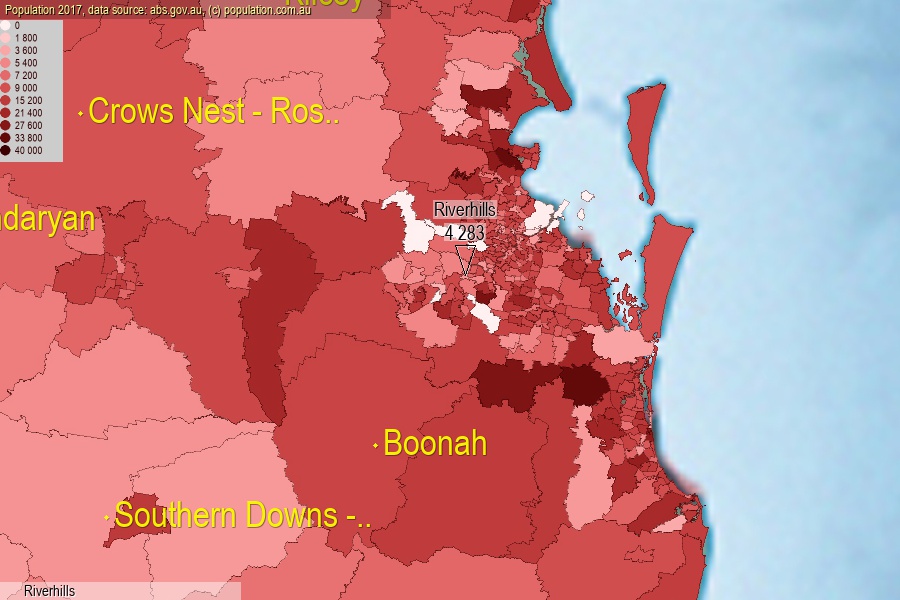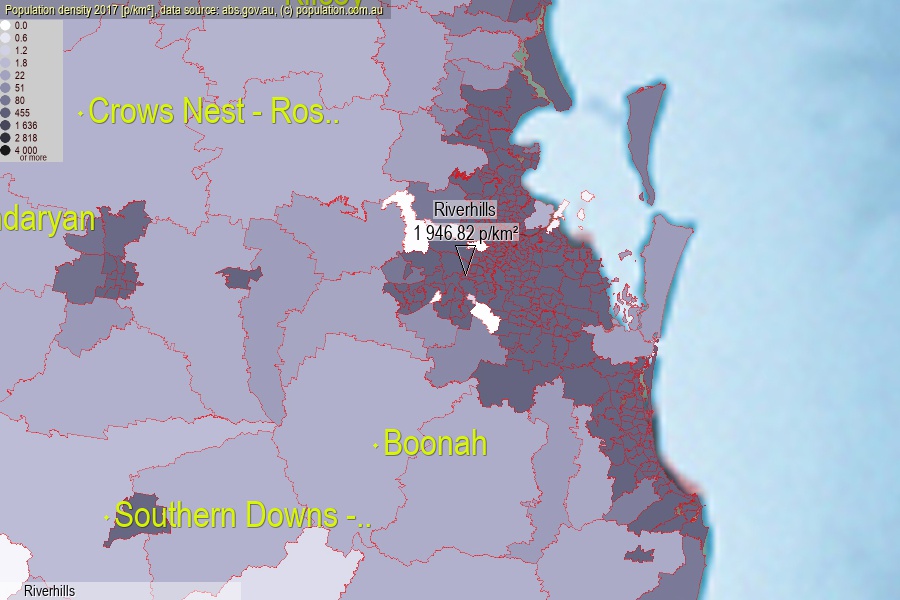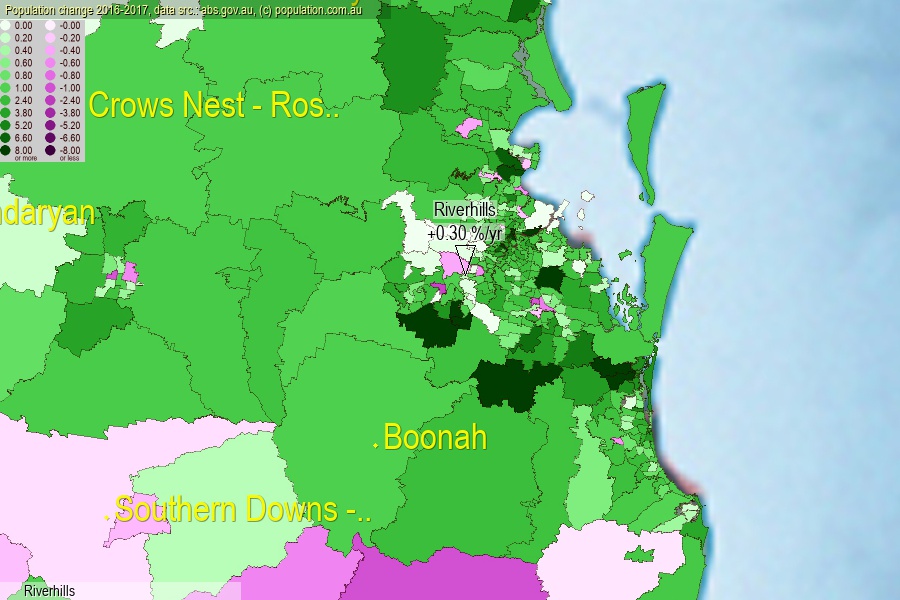 population.com.au
population.com.auLast official estimated population of Riverhills (as Statistical Area Level 2) was 4 283 people (on 2017-06-30)[2]. This was 0.02% of total Australian population and 0.086% of QLD population. Area of Riverhills is 2.20 km², in this year population density was 1 946.82 p/km² . If population growth rate would be same as in period 2016-2017 (+0.3%/yr), Riverhills population in 2025 would be 4 388. [0]



Click to enlarge. Riverhills is located in the center of the images.
Population [people], population density [p./km²] and population change [%/year] [2]
View borders » (new window) [4]
[1991-1992] +2.23 %/Yr.
[1992-1993] +1.27 %/Yr.
[1993-1994] +0.28 %/Yr.
[1994-1995] +3.55 %/Yr.
[1995-1996] +2.62 %/Yr.
[1996-1997] +0.85 %/Yr.
[1997-1998] +3.58 %/Yr.
[1998-1999] +2.56 %/Yr.
[1999-2000] +2.08 %/Yr.
[2000-2001] +2.55 %/Yr.
[2001-2002] +2.38 %/Yr.
[2002-2003] +0.64 %/Yr.
[2003-2004] +0.81 %/Yr.
[2004-2005] +2.34 %/Yr.
[2005-2006] +0.32 %/Yr.
[2006-2007] +0.25 %/Yr.
[2007-2008] -0.69 %/Yr.
[2008-2009] -0.69 %/Yr.
[2009-2010] -0.84 %/Yr.
[2010-2011] -1.08 %/Yr.
[2011-2012] +1.90 %/Yr.
[2012-2013] +2.73 %/Yr.
[2013-2014] +1.43 %/Yr.
[2014-2015] +1.24 %/Yr.
[2015-2016] +0.47 %/Yr.
[2016-2017] +0.30 %/Yr.
[0] Calculated with linear interpolation from officially estimated population
[1] Read more about SA2 and Australian Statistical Geography Standard (ASGS) on abs.gov.au
[2] Population data from Australian Bureau of Statistics (Population and density: 2017; change: 2016-2017)
[3] Digital Boundaries: Australian Statistical Geography Standard (ASGS) 2016.
[4] Border coordinates are simplifyed using Ramer-Douglas-Peucker algorithm.